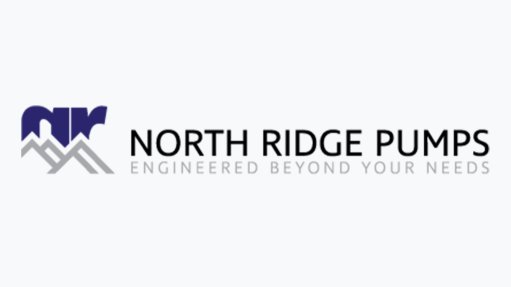Foundry waste beneficial to other industries
The foundry industry is one of the greatest recyclers; however, it generates many waste products that end up in landfills when, in fact, they can be used in several applications, says US Department of Agriculture research soil scientist Robert Dungan.
Speaking at the 2013 South African Metal Casting Conference, in the North West, on March 14, he noted that there were solutions for waste, such as moulding sand, slag and furnace refractory, produced by the foundry sector.
Dungan noted that foundry sand was the most common waste in the industry and that it could be used in several geotechnical and agricultural applications.
Despite the challenges of conducting a business in the global economy because of the global economic downturns, he believes that there are initiatives that can be applied by the energy-intensive foundry industry to improve the bottom line.
The use of foundry waste will benefit the industry, as raw materials and energy are conserved, while disposal costs are lowered. The pollution of soil, water and air resources will be reduced and the competitiveness of foundries will be improved.
Waste foundry sand, in particular, has many beneficial uses and can be incorporated into asphalt, concrete, construction fill, pipe bedding and road bases.
It also has agricultural and horticultural uses, such as potting and as speciality soils. In direct land applications it improves soil texture and, as topsoil, it is used in landscaping and turf grass.
Foundry sand can be used in manufactured soil and this mixture can be used to successfully grow vegetables that are safe for human consumption, grass and other plants.
When asked about the risks of foundry sand, Dungan said a risk assessment was conducted by the US Environmental Protec-tion Agency in a home-garden scenario, which found that the metal concentrations in foundry sand were similar to the levels found in native soil.
Further, foundry sand has low dioxin, polycyclic aromatic hydrocarbon and phenolic concentrations.
The assessment also revealed that most ferrous and aluminium-foundry sand is safe for use in soil-related applications.
The waste sand can also be used in green-building applications.
“Rooftop gardens are proven to save heating and cooling energy and costs, remediating stormwater and creating better environments for building occupants. Sandy loam mixed with foundry sand helps create a lightweight blend when combined with Haydite-expanded shale aggregate,” Dungan said.
Further, when used as a road base for embankments, foundry sand is not only an easy-to-handle and uniform material but is also not moisture sensitive or susceptible to freeze-thaw weathering.
Slag, which is the by-product of smelting ore, was another valuable waste material, noted Dungan.
Depending on the type, such as blast-furnace or steel slag, and whether it is pellet-ised, granulated or air cooled, slag can be used in asphalt aggregate, concrete masonry, soil cement and glass manufacture, as well as lightweight fill.
Dungan said it was important to market foundry wastes to end-users and recom-mended that a steering committee be estab-lished.
“Stakeholders need to be educated about metal casting. Existing regulations and focus efforts should be evaluated and those in industry should hold seminars, workshops and demonstration projects. Think of waste as a valuable by-product. Waste is not waste if it is beneficially used,” he concluded.
Article Enquiry
Email Article
Save Article
Feedback
To advertise email advertising@creamermedia.co.za or click here
Comments
Press Office
Announcements
What's On
Subscribe to improve your user experience...
Option 1 (equivalent of R125 a month):
Receive a weekly copy of Creamer Media's Engineering News & Mining Weekly magazine
(print copy for those in South Africa and e-magazine for those outside of South Africa)
Receive daily email newsletters
Access to full search results
Access archive of magazine back copies
Access to Projects in Progress
Access to ONE Research Report of your choice in PDF format
Option 2 (equivalent of R375 a month):
All benefits from Option 1
PLUS
Access to Creamer Media's Research Channel Africa for ALL Research Reports, in PDF format, on various industrial and mining sectors
including Electricity; Water; Energy Transition; Hydrogen; Roads, Rail and Ports; Coal; Gold; Platinum; Battery Metals; etc.
Already a subscriber?
Forgotten your password?
Receive weekly copy of Creamer Media's Engineering News & Mining Weekly magazine (print copy for those in South Africa and e-magazine for those outside of South Africa)
➕
Recieve daily email newsletters
➕
Access to full search results
➕
Access archive of magazine back copies
➕
Access to Projects in Progress
➕
Access to ONE Research Report of your choice in PDF format
RESEARCH CHANNEL AFRICA
R4500 (equivalent of R375 a month)
SUBSCRIBEAll benefits from Option 1
➕
Access to Creamer Media's Research Channel Africa for ALL Research Reports on various industrial and mining sectors, in PDF format, including on:
Electricity
➕
Water
➕
Energy Transition
➕
Hydrogen
➕
Roads, Rail and Ports
➕
Coal
➕
Gold
➕
Platinum
➕
Battery Metals
➕
etc.
Receive all benefits from Option 1 or Option 2 delivered to numerous people at your company
➕
Multiple User names and Passwords for simultaneous log-ins
➕
Intranet integration access to all in your organisation














